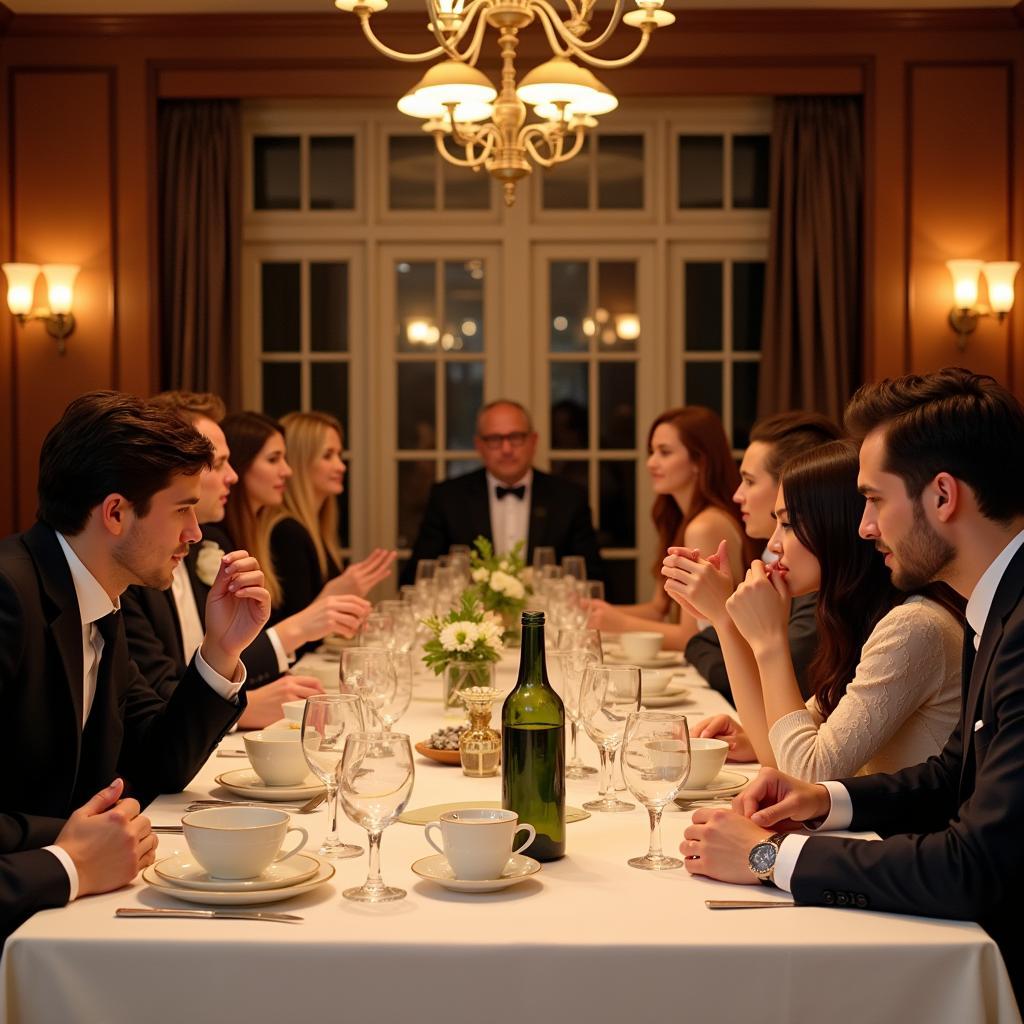Dining etiquette is a crucial aspect of social and professional communication. Mastering these etiquette rules not only boosts your confidence at social gatherings but also demonstrates respect for others and builds a positive personal image. This article provides essential tips for refined and courteous behavior at the dining table.
Mastering the Art of Dining Table Communication
Proper dining etiquette is more than just eating; it’s a subtle art of communication. From your posture and cutlery use to conversation, everything contributes to the initial impression you make.  The art of dining table communication
The art of dining table communication
Start by sitting upright, keeping your hands off the table (except for wrists when eating), and avoiding talking with your mouth full. When conversing, listen actively and show interest in the speaker. Steer clear of sensitive topics like politics, religion, or personal matters.
Cutlery Skills: From Basic to Advanced
Using cutlery correctly is a key element of dining etiquette. However, don’t worry if you’re not familiar with all the rules.
The basic principle is to use the knife in your right hand and the fork in your left. When cutting food, hold the knife and fork firmly, without raising them too high. After cutting, you can place the knife down and switch the fork to your right hand to eat (American style) or continue using the fork in your left hand (European style).
Have you ever encountered a “troll” situation at the dining table? Sometimes, a bit of humor can make a meal more enjoyable. Check out trolling life skills.
Courteous Conduct in Special Situations
At the dining table, you might face unexpected situations, such as spilling food, sneezing, or needing to excuse yourself. In these cases, stay calm and handle them tactfully. If you spill food, apologize and ask a server for assistance. If you need to sneeze, cover your mouth with a napkin and turn away.
Mr. Nguyen Van A, a soft skills consultant, shares: “Courteous behavior in unexpected situations demonstrates your professionalism and refinement.”
Dining Etiquette in Vietnamese Culture
Vietnamese culture has its own nuances in dining etiquette. For example, when offering a toast, you should raise your glass with both hands and slightly bow your head to show respect.
When picking up food, use communal chopsticks and avoid taking overly large portions. Ms. Tran Thi B, a Vietnamese culture lecturer, states: “Understanding and applying these etiquette rules helps you integrate better into Vietnamese social settings.”
For an insightful story about life skills, you can find it at life skills story of nails.
Conclusion
Dining etiquette is an essential skill that helps you create a positive impression and build good relationships with everyone. Practice regularly to become more confident and proficient in dining etiquette.
FAQ
- What should I wear to a formal dinner party?
- What should I do if I don’t know how to use a specific piece of cutlery?
- What should I talk about at the dining table?
- What should I do if I’m allergic to a particular dish?
- What kind of gift should I bring for the host when invited to a party?
- What should I do if I spill food or drinks?
- How much should I tip the server?
Description of Common Scenario Questions
Example: You are invited to an important dinner party with business partners. You are unsure about the correct cutlery usage and worry about making a bad impression.
Suggestions for Other Related Articles on the Website
You might also find articles on driving skills in narrow roads or safe traffic participation skills education helpful. The article on skills to face dangers down might also be beneficial for you.